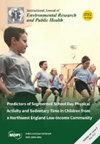基于深度学习的肥胖识别系统:利用智能手机惯性测量技术识别年轻人的肥胖情况
3区 综合性期刊
Q1 Medicine
International Journal of Environmental Research and Public Health
Pub Date : 2024-09-04
DOI:10.3390/ijerph21091178
引用次数: 0
摘要
青少年肥胖识别问题日益受到关注。本研究提出了一种基于深度学习的肥胖识别框架,该框架将智能手机惯性测量与深度学习模型相结合,以解决这一问题。利用通过移动健康应用收集的加速度计、陀螺仪和旋转向量数据,我们分析了步态模式中的肥胖指标。我们的框架采用了三种深度学习模型:卷积神经网络(CNN)、长短期记忆网络(LSTM)和混合 CNN-LSTM 模型。混合模型的准确率最高,达到 97%,其次是 LSTM 模型的 96.31%,以及 CNN 模型的 95.81%。尽管取得了可喜的成果,但这项研究仍存在一些局限性,例如样本较少,且排除了步态扭曲的个体。在未来的工作中,我们的目标是开发更通用的模型,以适应更广泛的步态模式,包括有医疗状况的步态模式。本文章由计算机程序翻译,如有差异,请以英文原文为准。
Deep Learning-Based Obesity Identification System for Young Adults Using Smartphone Inertial Measurements
Obesity recognition in adolescents is a growing concern. This study presents a deep learning-based obesity identification framework that integrates smartphone inertial measurements with deep learning models to address this issue. Utilizing data from accelerometers, gyroscopes, and rotation vectors collected via a mobile health application, we analyzed gait patterns for obesity indicators. Our framework employs three deep learning models: convolutional neural networks (CNNs), long-short-term memory network (LSTM), and a hybrid CNN–LSTM model. Trained on data from 138 subjects, including both normal and obese individuals, and tested on an additional 35 subjects, the hybrid model achieved the highest accuracy of 97%, followed by the LSTM model at 96.31% and the CNN model at 95.81%. Despite the promising outcomes, the study has limitations, such as a small sample and the exclusion of individuals with distorted gait. In future work, we aim to develop more generalized models that accommodate a broader range of gait patterns, including those with medical conditions.
求助全文
通过发布文献求助,成功后即可免费获取论文全文。
去求助
来源期刊

International Journal of Environmental Research and Public Health
Medicine-Public Health, Environmental and Occupational Health
CiteScore
7.30
自引率
0.00%
发文量
14422
审稿时长
1 months
期刊介绍:
International Journal of Environmental Research and Public Health (IJERPH) (ISSN 1660-4601) is a peer-reviewed scientific journal that publishes original articles, critical reviews, research notes, and short communications in the interdisciplinary area of environmental health sciences and public health. It links several scientific disciplines including biology, biochemistry, biotechnology, cellular and molecular biology, chemistry, computer science, ecology, engineering, epidemiology, genetics, immunology, microbiology, oncology, pathology, pharmacology, and toxicology, in an integrated fashion, to address critical issues related to environmental quality and public health. Therefore, IJERPH focuses on the publication of scientific and technical information on the impacts of natural phenomena and anthropogenic factors on the quality of our environment, the interrelationships between environmental health and the quality of life, as well as the socio-cultural, political, economic, and legal considerations related to environmental stewardship and public health.
The 2018 IJERPH Outstanding Reviewer Award has been launched! This award acknowledge those who have generously dedicated their time to review manuscripts submitted to IJERPH. See full details at http://www.mdpi.com/journal/ijerph/awards.
 求助内容:
求助内容: 应助结果提醒方式:
应助结果提醒方式:


